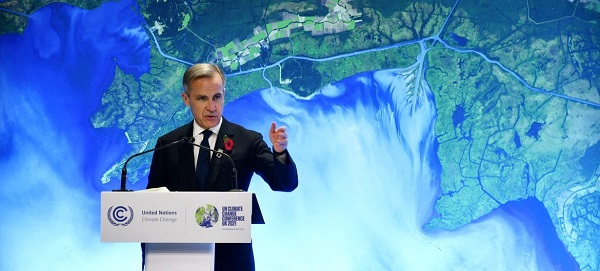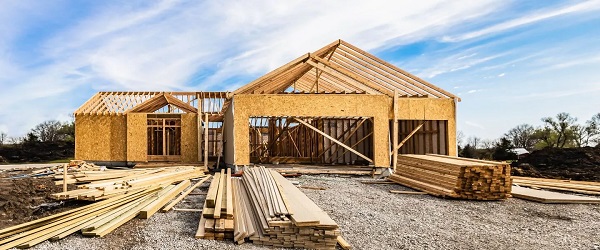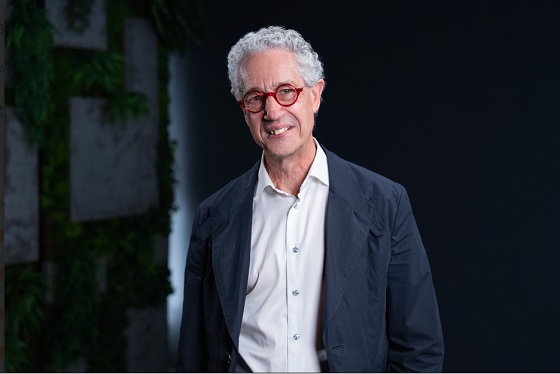Alberta
Province advancing plans to build stand-alone Stollery Children’s Hospital
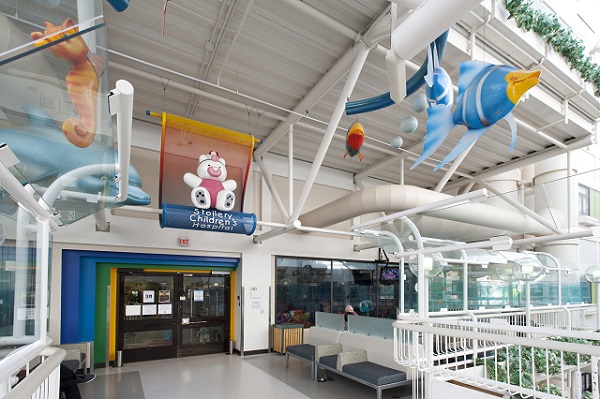
Investing in a new Stollery Children’s Hospital |
If passed, Budget 2024 will allocate $20 million over three years to advance plans for a stand-alone Stollery Children’s Hospital in Edmonton.
With 236 beds, the Stollery Children’s Hospital is the second-largest children’s hospital in Canada and has among the highest inpatient volumes of any children’s hospital in Canada. As the province’s population continues to grow, it is crucial that children in Edmonton and northern Alberta have access to the specialized care they need.
Alberta’s government is steadfast in its commitment to build a stand-alone Stollery Children’s Hospital. A new facility would provide more beds, larger clinical spaces, more private rooms and dedicated areas for children and their families. It would also result in additional teaching spaces and state-of-the-art technologies to enhance health care delivery specifically for children.
“A new, stand-alone children’s hospital will build capacity and enable health care providers to continue delivering world-class care to children. This investment, as well as other capital investments outlined in Budget 2024, is an example of how we are creating a more unified and efficient health care system for Albertans. I look forward to sharing more details soon.”
“The new Stollery Children’s Hospital project is the latest addition to Edmonton’s health care infrastructure. Building upon the successes of recent projects like the new emergency department at the Misericordia Community Hospital and Norwood West at the Gene Zwozdesky Centre, the new Stollery will help increase health care capacity in the capital region.”
Alberta’s government initially invested in the project in 2021, providing $1 million that was matched by the Stollery Children’s Hospital Foundation. The proposed investment in Budget 2024 will include $17 million in new funding, following the $3 million invested through last year’s budget, for a total investment of $21 million in government funding over four years.
The investment in a new stand-alone Stollery Children’s Hospital is not only important for families in the city of Edmonton and capital region, it is important for families living across northern Alberta. The Stollery Children’s Hospital serves families in a geographical area of more than 500,000 square kilometres, stretching from Red Deer to Alberta’s northernmost border with the Northwest Territories. Almost 40 per cent of inpatients at the Stollery come from outside the Edmonton area and the hospital is the closest and primary children’s hospital for residents of the Northwest Territories.
“The Stollery has an incredible reputation for the impact it makes in the community, and especially in northern Alberta. This stand-alone Stollery Children’s Hospital is a long-awaited, necessary project that will help provide additional health care services to children and their families when they need it the most.”
“This remarkable investment will take us one step closer to our goal of building a reimagined Stollery Children’s Hospital for the future. A new Stollery is poised to provide the most innovative, modern and family-centred physical and mental health care to help bring hope and comfort to kids dealing with serious illness and injury. Thank you to the Government of Alberta for recognizing the very real need for this hospital.”
“A new Stollery Children’s Hospital is urgently needed to provide dedicated care for our children. By separating kids from adults, a stand-alone Stollery ensures a nurturing environment and the most modern pediatric equipment and resources to offer families like ours a health care space designed exclusively for our children.”
Plans for the new hospital include integrating mental health resources, virtual care, research and training facilities to better support patients and improve health outcomes. There will also be a focus on ensuring health care providers, parents and caregivers have the resources they need to support patients.
Alberta’s government remains dedicated to expanding and modernizing hospitals and facilities to provide Albertans with high-quality health care while increasing system capacity and supporting front-line health care workers.
“Alberta’s government is committed to building a stand-alone Stollery Children’s Hospital when planning is complete. A new facility would provide more beds, larger clinical spaces, more private rooms and dedicated areas for children and their families. There would also be more teaching spaces and state-of-the-art technologies to enhance health care delivery.”
Quick facts
- Established in 2001, the Stollery Children’s Hospital is a full-service pediatric hospital and centre for complex pediatric care and research.
- The Stollery Children’s Hospital sees about 300,000 children, 55,000 emergency room visits and 12,000 surgeries annually.
Related news
Alberta
‘Weird and wonderful’ wells are boosting oil production in Alberta and Saskatchewan

From the Canadian Energy Centre
Multilateral designs lift more energy with a smaller environmental footprint
A “weird and wonderful” drilling innovation in Alberta is helping producers tap more oil and gas at lower cost and with less environmental impact.
With names like fishbone, fan, comb-over and stingray, “multilateral” wells turn a single wellbore from the surface into multiple horizontal legs underground.
“They do look spectacular, and they are making quite a bit of money for small companies, so there’s a lot of interest from investors,” said Calin Dragoie, vice-president of geoscience with Calgary-based Chinook Consulting Services.
Dragoie, who has extensively studied the use of multilateral wells, said the technology takes horizontal drilling — which itself revolutionized oil and gas production — to the next level.
“It’s something that was not invented in Canada, but was perfected here. And it’s something that I think in the next few years will be exported as a technology to other parts of the world,” he said.
Dragoie’s research found that in 2015 less than 10 per cent of metres drilled in Western Canada came from multilateral wells. By last year, that share had climbed to nearly 60 per cent.
Royalty incentives in Alberta have accelerated the trend, and Saskatchewan has introduced similar policy.
Multilaterals first emerged alongside horizontal drilling in the late 1990s and early 2000s, Dragoie said. But today’s multilaterals are longer, more complex and more productive.
The main play is in Alberta’s Marten Hills region, where producers are using multilaterals to produce shallow heavy oil.
Today’s average multilateral has about 7.5 horizontal legs from a single surface location, up from four or six just a few years ago, Dragoie said.
One record-setting well in Alberta drilled by Tamarack Valley Energy in 2023 features 11 legs stretching two miles each, for a total subsurface reach of 33 kilometres — the longest well in Canada.
By accessing large volumes of oil and gas from a single surface pad, multilaterals reduce land impact by a factor of five to ten compared to conventional wells, he said.
The designs save money by skipping casing strings and cement in each leg, and production is amplified as a result of increased reservoir contact.
Here are examples of multilateral well design. Images courtesy Chinook Consulting Services.
Parallel
Fishbone
Fan
Waffle
Stingray
Frankenwells
Alberta
Alberta to protect three pro-family laws by invoking notwithstanding clause
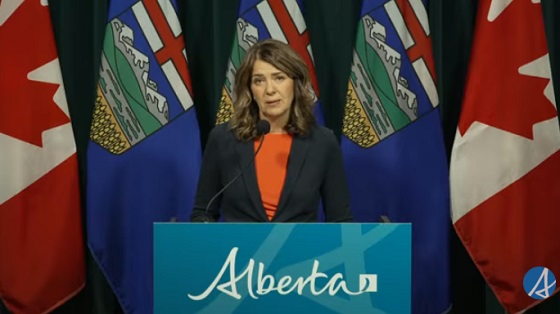
From LifeSiteNews
Premier Danielle Smith said her government will use a constitutional tool to defend a ban on transgender surgery for minors and stopping men from competing in women’s sports.
Alberta Premier Danielle Smith said her government will use a rare constitutional tool, the notwithstanding clause, to ensure three bills passed this year — a ban on transgender surgery for minors, stopping men from competing in women’s sports, and protecting kids from extreme aspects of the LGBT agenda — stand and remain law after legal attacks from extremist activists.
Smith’s United Conservative Party (UCP) government stated that it will utilize a new law, Bill 9, to ensure that laws passed last year remain in effect.
“Children deserve the opportunity to grow into adulthood before making life-altering decisions about their gender and fertility,” Smith said in a press release sent to LifeSiteNews and other media outlets yesterday.
“By invoking the notwithstanding clause, we’re ensuring that laws safeguarding children’s health, education and safety cannot be undone – and that parents are fully involved in the major decisions affecting their children’s lives. That is what Albertans expect, and that is what this government will unapologetically defend.”
Alberta Justice Minister and Attorney General Mickey Amery said that the laws passed last year are what Albertans voted for in the last election.
“These laws reflect an overwhelming majority of Albertans, and it is our responsibility to ensure that they will not be overturned or further delayed by activists in the courts,” he noted.
“The notwithstanding clause reinforces democratic accountability by keeping decisions in the hands of those elected by Albertans. By invoking it, we are providing certainty that these protections will remain in place and that families can move forward with clarity and confidence.”
The Smith government said the notwithstanding clause will apply to the following pieces of legislation:
-
Bill 26, the Health Statutes Amendment Act, 2024, prohibits both gender reassignment surgery for children under 18 and the provision of puberty blockers and hormone treatments for the purpose of gender reassignment to children under 16.
-
Bill 27, the Education Amendment Act, 2024, requires schools to obtain parental consent when a student under 16 years of age wishes to change his or her name or pronouns for reasons related to the student’s gender identity, and requires parental opt-in consent to teaching on gender identity, sexual orientation or human sexuality.
-
Bill 29, the Fairness and Safety in Sport Act, requires the governing bodies of amateur competitive sports in Alberta to implement policies that limit participation in women’s and girls’ sports to those who were born female.”
Bill 26 was passed in December of 2024, and it amends the Health Act to “prohibit regulated health professionals from performing sex reassignment surgeries on minors.”
As reported by LifeSiteNews, pro-LGBT activist groups, with the support of Alberta’s opposition New Democratic Party (NDP), have tried to stop the bill via lawsuits. It prompted the Smith government to appeal a court injunction earlier this year blocking the province’s ban on transgender surgeries and drugs for gender-confused minors.
Last year, Smith’s government also passed Bill 27, a law banning schools from hiding a child’s pronoun changes at school that will help protect kids from the extreme aspects of the LGBT agenda.
Bill 27 will also empower the education minister to, in effect, stop the spread of extreme forms of pro-LGBT ideology or anything else to be allowed to be taught in schools via third parties.
Bill 29, which became law last December, bans gender-confused men from competing in women’s sports, the first legislation of its kind in Canada. The law applies to all school boards, universities, and provincial sports organizations.
Alberta’s notwithstanding clause is like all other provinces’ clauses and was a condition Alberta agreed to before it signed onto the nation’s 1982 constitution.
It is meant as a check to balance power between the court system and the government elected by the people. Once it is used, as passed in the legislature, a court cannot rule that the “legislation which the notwithstanding clause applies to be struck down based on the Charter of Rights and Freedoms, the Alberta Bill of Rights, or the Alberta Human Rights Act,” the Alberta government noted.
While Smith has done well on some points, she has still been relatively soft on social issues of importance to conservatives , such as abortion, and has publicly expressed pro-LGBT views, telling Jordan Peterson earlier this year that conservatives must embrace homosexual “couples” as “nuclear families.”
-

 Uncategorized2 days ago
Uncategorized2 days agoCost of bureaucracy balloons 80 per cent in 10 years: Public Accounts
-

 Daily Caller1 day ago
Daily Caller1 day agoDemocrats Explicitly Tell Spy Agencies, Military To Disobey Trump
-

 Addictions2 days ago
Addictions2 days agoActivists Claim Dealers Can Fix Canada’s Drug Problem
-

 Carbon Tax2 days ago
Carbon Tax2 days agoCarney fails to undo Trudeau’s devastating energy policies
-

 Daily Caller1 day ago
Daily Caller1 day agoALAN DERSHOWITZ: Can Trump Legally Send Troops Into Our Cities? The Answer Is ‘Wishy-Washy’
-

 Alberta19 hours ago
Alberta19 hours agoAlberta on right path to better health care
-

 Alberta2 days ago
Alberta2 days agoEdmonton and Red Deer to Host 2027 IIHF World Junior Hockey Championship
-

 Alberta2 days ago
Alberta2 days agoAlbertans choose new licence plate design with the “Strong and Free” motto













